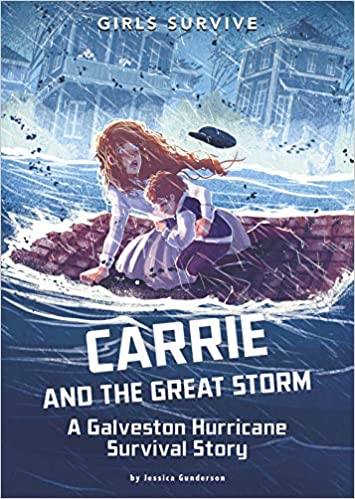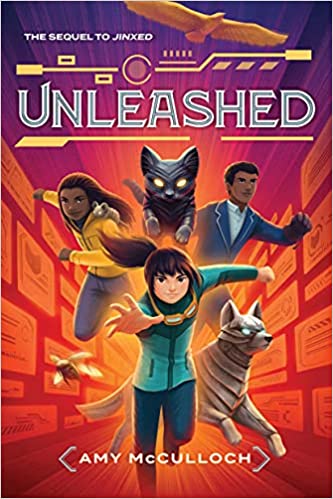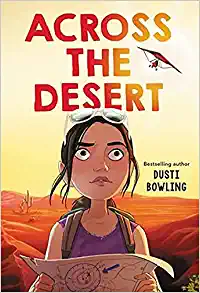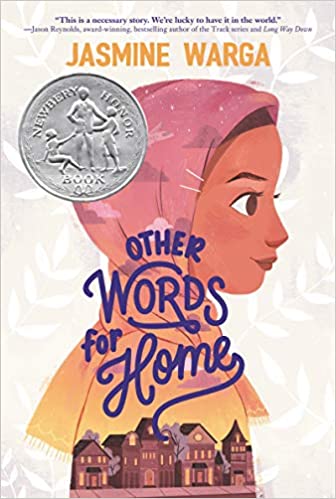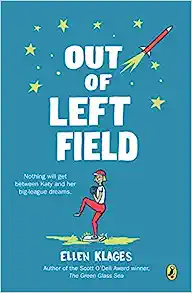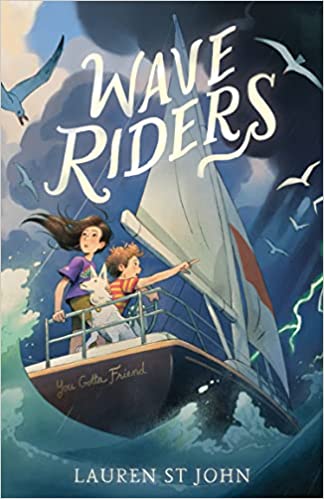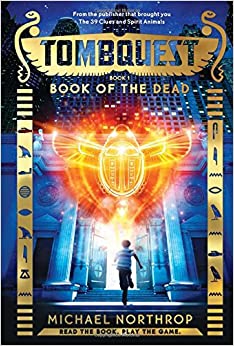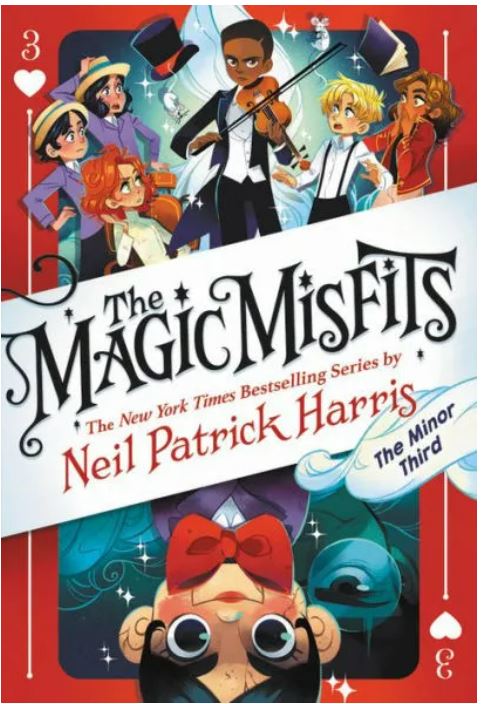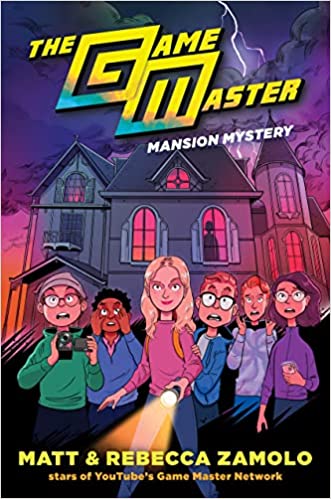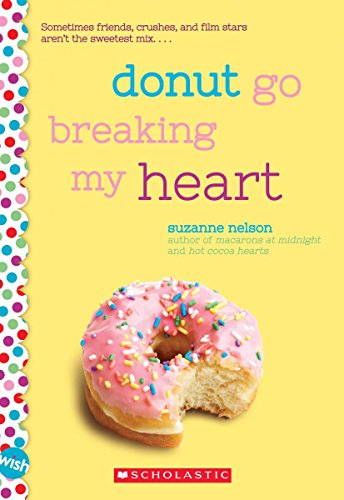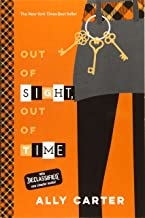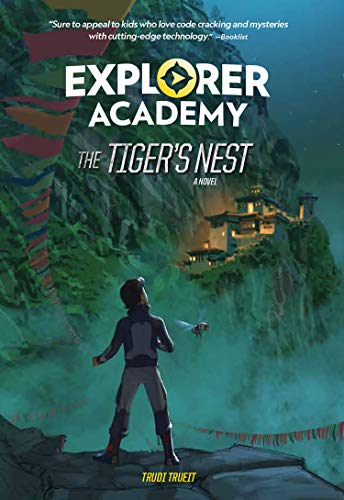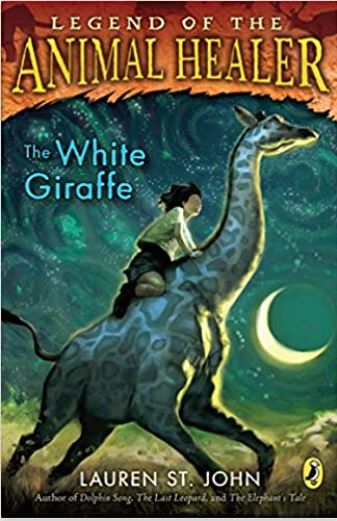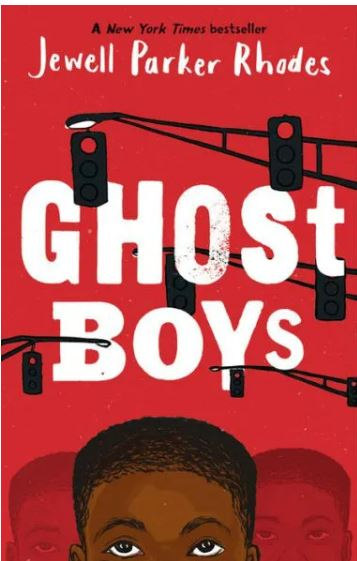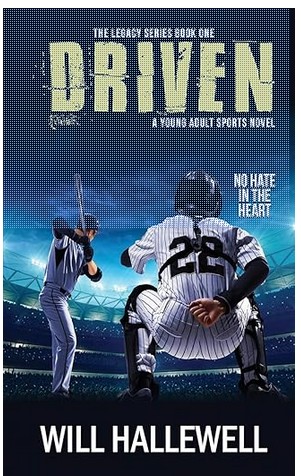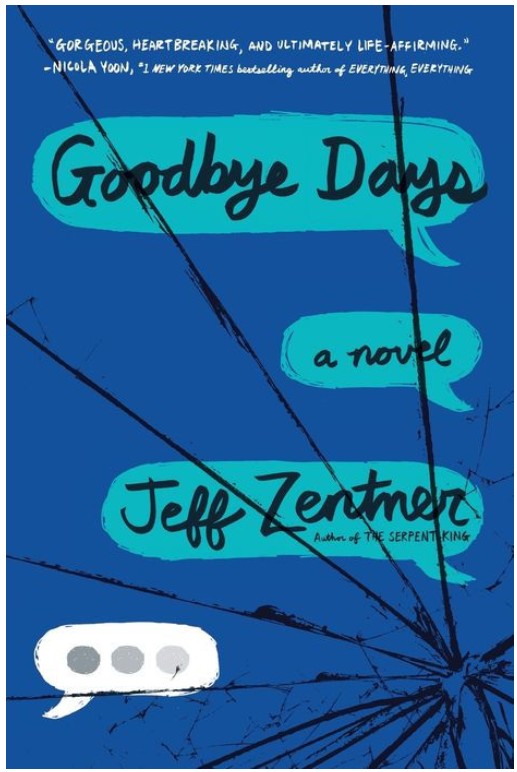Twelve-year-old Carrie is excited to spend the night at her best friend Betsy’s house one Saturday night in Galveston, Texas. But when her parents receive a last-minute invitation to a high-society party, they insist Carrie stay home to babysit her little brother, Henry. Despite a storm brewing — and Carrie’s protests over the change in plans — her parents go to the party. As the storm approaches, the streets begin flooding. Henry is scared, and Carrie tries to calm him. But then a hurricane hits, and the house is shaken from its foundation. Carrie must make some quick decisions to save herself and her little brother from the Great Galveston Hurricane.
Carrie and The Great Storm: A Galveston Hurricane Survival Story focuses on Carrie, a typical fashion-loving girl who is upset when she has to cancel a sleepover to babysit her brother, Henry. When the storm hits, she has only herself to rely on, but she doesn’t let fear overtake her. Instead, she uses quick thinking and bravery to save herself and her brother. When Carrie and Henry’s raft gets stuck between trees, Carrie’s main concern is survival. However, when she sees a young boy, William, floating in the water, Carrie jumps in and saves his life. After seeing the city’s devastation, Carrie realizes how lucky she is to be alive.
While most of the story focuses on the Great Storm, segregation is mentioned several times. The author’s note explains that one positive outcome of the storm was that people came together and helped each other, despite their racial differences. This ties into the story because Carrie helps William, who is African American. Afterward, one man gives Carrie a strange look when they see her walking with a black boy. However, Carrie didn’t care about William’s race because at that point they were the same—they were survivors.
To make the story easy to follow, each chapter begins with Carrie’s location and the date. In addition, every ten to seventeen pages there is a black-and-white illustration that focuses on Carrie’s experiences. Readers can learn the real story of the Galveston Hurricane of 1900 from the nonfiction information at the back of the book. A glossary, discussion questions, and writing prompts are also provided.
Readers will be pulled into the story because Carrie is a likable character with a relatable conflict, and it doesn’t take long for the action and suspense to begin. Even though Carrie and The Great Storm: A Galveston Hurricane Survival Story is educational, readers will love the story because it is also entertaining and easy to read. Through Carrie’s experiences, readers will see that “Your actions, no matter how large or small, can make a difference.” For more water-related survival stories, check out Tara and the Towering Wave: An Indian Ocean Tsunami Survival Story by Cristina Oxtra and the I Survived Series by Lauren Tarshis.
Sexual Content
- None
Violence
- Carrie and her brother are home alone when the storm hits. Carrie looks out the window and, “through the rage of the storm I could see shapes in the water. A panicked horse swam past, kicking and neighing. A woman’s head surfaced. She screamed and was pulled underwater again.”
- When Carrie’s house is destroyed by the hurricane, she and her brother are on a makeshift raft. As she and her brother huddle for warmth, Carrie sees “the face of a young black boy emerge. ‘Help me!’ he cried before the water swallowed him up again.” Carrie is able to pull the boy, William, onto her raft.
- William tells Carrie the story of his family. He was working at his family’s store when, “I got swept away. . . I could still see the store though, through flashes of lightning. And then all of a sudden I couldn’t see it anymore. It collapsed.” Later, William finds out that only his father survived.
- After the water recedes, Carrie is walking and sees “a huge pile of debris. A pair of boots stuck out from the bottom of the pile. And then I realized that the boots were attached to a pair of legs.”
- Carrie hears cries for help, and then sees “a group of men digging through the rubble, looking for survivors.”
Drugs and Alcohol
- None
Language
- None
Supernatural
- None
Spiritual Content
- None
